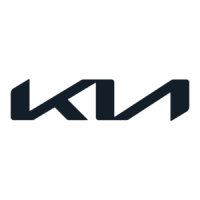Safety features of your vehicle
143
Seat belts
Seat belts
Seat belt restraint system
Seat belts are designed to bear upon the
bony structure of the body, and should
be worn low across the front of the pel
-
vis, chest and shoulders, as applicable;
wearing the lap section of the belt across
the abdominal area must be avoided.
Seat belts should be adjusted as firmly
as possible, consistent with comfort, to
provide the protection for which they
have been designed.
A slack belt will greatly reduce the pro
-
tection afforded to the wearer.
Care should be taken to avoid contami
-
nation of the webbing with polishes, oils
and chemicals, and particularly battery
acid. Cleaning may safely be carried out
using mild soap and water. The belt
should be replaced if webbing becomes
frayed, contaminated or damaged.
僅 For maximum restraint system pro
-
tection, the seat belts must always be
used whenever the vehicle is moving.
A properly positioned shoulder belt
should be positioned midway over
your shoulder across your collarbone.
僅 Never allow children to ride in the
front passenger seat. See child
restraint system section for further
discussion.
僅 No modifications or additions should
be made by the user which would
either prevent the seat belt adjusting
devices from operating to remove
slack, or prevent the seat belt assem
-
bly from being adjusted to remove
slack.
僅 When you fasten the seat belt, be
careful not to latch the seat belt in
buckles of other seats. It's very dan
-
gerous and you may not be protected
by the seat belt properly.
僅 Do not unfasten the seat belt and do
not fasten and unfasten the seat belt
repeatedly while driving. This could
result in loss of control, and an acci
-
dent causing death, serious injury, or
property damage.
僅 When fastening the seat belt, make
sure that the seat belt does not pass
over objects that are hard or can
break easily.
Shoulder belt
Never wear the shoulder belt under your
arm or behind your back. An improperly
positioned shoulder belt cannot protect
the occupant in a crash.
Damaged seat belt
Replace the entire seat belt assembly if
any part of the webbing or hardware is
damaged as you can no longer be sure
that a damaged seat belt will provide
protection in a crash.
Twisted seat belt
Make sure your seat belt is not twisted
when worn. A twisted seat belt may not
properly protect you in an accident and
could even cut into your body.
Seat belt buckle
Do not allow foreign material (gum,
crumbs, coins, etc.) to obstruct the seat
belt buckle. This may prevent the seat
belt from fastening securely.

